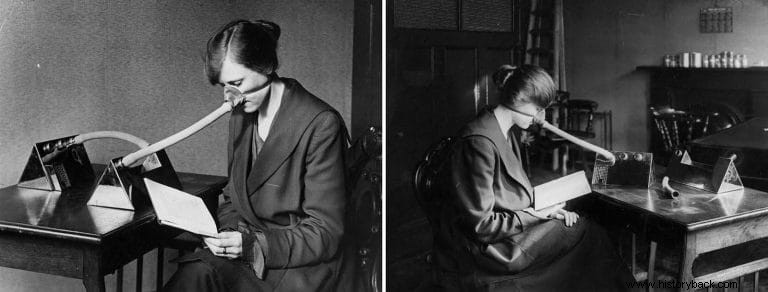The Spanish Influence radically reconfigured the human population more than any other event following the Black Death of 1347-'52, which reduced the population of the Old Continent by a third.
It did not leave, as the name suggests, from the Iberian Peninsula, but most likely from the US Midwest. Already in March, more than a thousand workers at the Ford Motor Company contracted the flu, but the mortality was not noteworthy.
In April and May, 500 out of 1,900 inmates fell ill in the San Quentin prison. early March, the flu arrived in Kansas, at Camp Funston, a training base that housed 20,000 recruits.
With a couple of months to go until the end of the Great War, in September 1918, the pandemic came widespread in Europe especially by the US expeditionary force.
Soldiers who fell ill at the front were hospitalized in the rear, helping to spread the disease even among civilians.

The epidemic was called in the Spanish era for a specific reason: Spain was immune from military censorship, as in Europe it was one of the few countries not involved in the war conflict, therefore health news, with respect to the evolution of the epidemic in the Iberian country, was promptly provided by the press in the harsh and dramatic reality.
This transparency, in the dissemination of health information, cost Spain the reputation of a nation where the epidemic was particularly virulent and the undeserved title of the source of the contagion:something that did not correspond to the truth.
The Spanish flu manifested itself in three waves. The second, which spread from mid-August 1918, is the one that caused the greatest number of victims.

It is estimated to have infected around one billion people, killing between 21 and 25 million.
Other researchers are reaching 40 million victims, considering that statistics in continents such as Asia, Africa and South America were not reliable and that general health conditions were particularly precarious.
According to Edwin Oakes Jordan ( Epidemic Influenza 1927) 1,075,685 people died in North and Central America, 327,250 in Latin America, 2,163,303 people in Europe, 15,757,363 in Asia, 965,245 in Australia and Oceania, 1,353,428 in Africa for a total of 21 million 642,274 people who died from the flu between 1918 and 1921.
In Europe the primacy was held by Russia with 450,000 deaths. Italy came immediately after, second in the ranking, with 375,000 deaths.

In Italy, the pandemic infected about 4 and a half million people, about 12% of the entire population which, at the time, numbered about 36 million individuals.
The disease affected mainly in the south, although mortality varied significantly from city to city, apparently without a rule. In Turin, for example, the dead reached 400 a day but the head of the cabinet, Vittorio Emanuele Orlando, had imposed severe censorship. The funeral tolling of the bells was forbidden, as well as the death announcements, the processions and the funerals, in order not to demoralize the nation.
At the front, in mid-October, peaks of 3,000 new cases were reached every day. In the 1st Army, in the last four months of 1918, there were 32,482 cases of contagion with 2703 deaths.
The Spanish flu was distinguished from other flu epidemics for two characteristics in particular:high mortality and a fact that mainly affected people between 20 and 40 years old.
Most of the deaths were the result of bacterial pneumonia. To combat it, the principle of "social distance" was applied, to avoid mass gatherings.
Schools, theaters, cinemas, taverns, markets and churches were temporarily closed. The use of masks and disinfectants was recommended or even imposed by law to curb contagion.
Medicine proved powerless:doctors died infected and those who survived saw patients, relatives and friends, die in mass. The first therapies used the phenazone to lower the temperature, the tincture of walnut vomica to stimulate the nervous system and extracts of digitalis for the treatment of heart failure.
Many doctors were strongly opposed to the use of aspirin, a recent invention which, while lowering the fever, was accused of promoting pulmonary and heart complications. A doctor at the time noted:"They injected a soup made up of blood and mucus of the affected, filtered to eliminate the largest cells and debris" but this only aggravated the situation.
Then the imagination of doctors and pharmacists went wild :a French doctor advised the sick to drink a lot of red wine until the hat hanging from the doorknob appeared to be doubled. The Venetian writer Tito Spagnol was caustic about the treatments in vogue:"Four quinine tablets and a bit of straw to die on them".
The "Spanish" suddenly disappeared towards the end of 1920, perhaps due to a mutation of the virus or as a result of more effective treatments.
